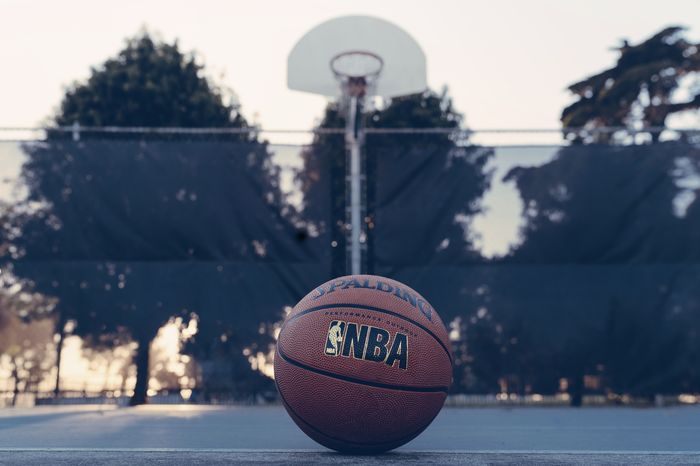The Jordan 1 and Nike’s Marketing Revolution
Khalid Guma’a retraces the revolutionary steps taken by Nike and Michael Jordan which opened the doors to a new world of sport marketing.

“On September 15th, Nike created a revolutionary new basketball shoe. On October 18th, the NBA threw them out of the game. Fortunately, the NBA can’t stop you from wearing them.” These are three sentences from a Nike Jordan 1 advert that was at the centre of real change, not only in the way that the public saw basketball shoes, but in the marketability of athletes in team sports.
As a firm, Nike started out in the running business. In the early 80s, they were firmly second in America to Reebok, and in the basketball business it was all about Converse and Adidas. Around this time, the talent of black players started to transcend racism and they began to come through to dominate basketball. In 1980s America, the black community was struggling. The crack epidemic and Reagan’s neoconservatism had hit them disproportionately hard. Nike knew that to reach this crucial audience, they needed a figurehead, one that the community could relate with. That man was the Chicago Bulls’ first round draft pick, Michael Jordan.
“...it was the way he leapt that was a crucial marketing tool: ‘Michael Jordan 1-0 Isaac Newton’”
The Jordan 1 (the first shoe in the line) was so successful because of the way, through its association with Michael Jordan, it represented and empowered the black community in the States. Hope in a time of ravaging economic disparity. Nike had understood the power of a personal connection between consumers and professional athletes, and used that power to create a marketing strategy unlike anything seen before. People who don’t trust you or your brand will trust their favourite shooting guard or their favourite team’s best attacking midfielder. They will trust people who grew up like them, speak like them, and look like them.
Away from the connection that the American public had to Jordan, it was the maverick nature of the athlete himself that aided the success of the shoe. Jordan was a formidable basketball player. He shot with devastating precision and ran with undeniable elegance, but it was the way he leapt that became a crucial marketing tool. One headline sums it up best: “Michael Jordan 1-0 Isaac Newton.” Jordan could not be stopped, not even by the laws of gravity. But it ran deeper than that. He wore those shoes in everything he did. He played well, and the shoes were part of it. In every moment of brilliance concocted in the brain of Jordan, the shoes were involved in the execution of it.
Despite the Jordan 1s originally being banned because the NBA had a specific rule about the requirement for footwear to be white, the idea was pushed that they were banned because they somehow made Jordan too good a player. Jordan could not be stopped, but more importantly, you could not be stopped in Air Jordan 1s.
“Nike had created a selling technique so powerful that it overpowered the public’s understanding of the limits of the value of a shoe. ”
Jordan had not originally wanted to sign with Nike. He wanted Adidas, but they made no real approach for him and it was Nike’s specific agreement with his agent that made him sign for them. They agreed to market him not like a basketball player, but a tennis player, in an unusual strategy that was initially thought not to work with athletes in team sports. Converse had some great basketball players – Magic Johnson, Julius Erving, Larry Bird – but all 3 wore the same shoes despite being stars. Converse were actually charging some NBA teams to buy their shoes and wear them in games. This is a typical example of the lack of recognition of opportunities by shoe manufacturers before the Jordan 1s.
Some basketball players did have shoe contracts, Kareem Abdul-Jabbar’s $100,000 contract with Adidas is perhaps the best example of this, but big money was never made. This is a far cry from the 126 million Jordan 1s sold in the year following their release or the murders that happened over these coveted shoes. Nike had created a selling technique so powerful that it overpowered the public’s understanding of the limits of the value of a shoe.
Jordan 1s paved the way for exceptional athletes to sell themselves, or a version of themselves, on a much larger scale. Jordan himself and the longevity of the success of the brand is a testament to this; other examples include Cristiano Ronaldo and his $1 billion Nike deal or Gary Lineker’s role as the cover boy for Walkers crisps. In the latter, the inherently patriotic nature of a footballer who played for his country at a World Cup has been used to represent the Britain-loving values of the company. Jordan started the rise and, in combination with the ever-extending reach of technology and the rapid commercialization of many sports clubs, the sky’s the limit financially. Newton’s laws certainly won’t be able to halt this rise.
 Arts / Plays and playing truant: Stephen Fry’s Cambridge25 April 2025
Arts / Plays and playing truant: Stephen Fry’s Cambridge25 April 2025 News / Candidates clash over Chancellorship25 April 2025
News / Candidates clash over Chancellorship25 April 2025 Music / The pipes are calling: the life of a Cambridge Organ Scholar25 April 2025
Music / The pipes are calling: the life of a Cambridge Organ Scholar25 April 2025 Comment / Cambridge builds up the housing crisis25 April 2025
Comment / Cambridge builds up the housing crisis25 April 2025 Comment / Pick an exam format and stick to it25 April 2025
Comment / Pick an exam format and stick to it25 April 2025






